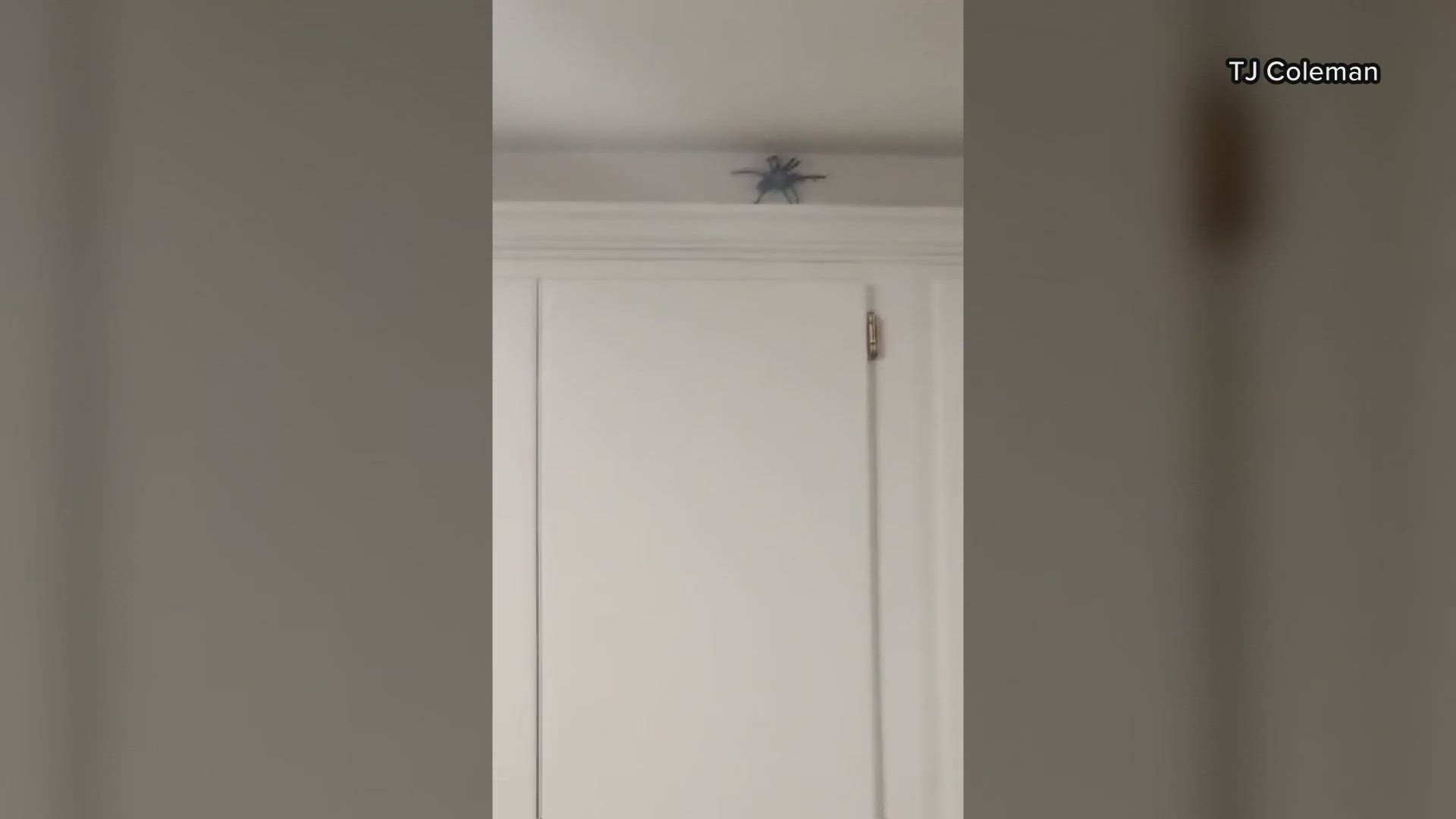TEXAS, USA — Imagine coming home from a long day of work to find a big tarantula crawling inside your house! Well, that's the reality for a surprising number of homeowners across Texas.
The creepy crawlers, some even as big as a human hand, are inching their way into homes, and people are wondering how they got there.
It was something Temple homeowner Debbie Ramsey said she had never seen before until she moved to Texas. She even caught one herself, but it wasn't on purpose.
"I'm old, and I don't see well," Ramsey said. "I thought it was just a little piece of fuzz off one of the dogs, and I picked it up and it started crawling in my hand. I threw it in one of the boys' rooms."
This sounds like a terrifying situation for anyone to be in, but the Cameron Park Zoo says it's perfectly natural. That's partly because of the weather we have been seeing across the state.
"Those dry, nice houses that are heated, they're going to sound really inviting for those tarantulas because they want to be able to get out of the cold, out of the rain," Cameron Park Zoo Animal Ambassador Specialist Danielle Warren said.
Fall is also mating season for the creepy crawlers.
"Those males are getting excited," Warren added.
There are about 900 species of tarantulas.
Tarantulas are native to Texas, so if you end up spotting one inside, don't be too shocked.
"They're super important to the ecosystem because they prey on small insects and small mammals," Warren said.
Even though they look scary, tarantulas are more of a pest than a danger.
Warren wants people to remember while tarantulas are venomous, the venom found inside is not considered dangerous. However, it could cause an allergic reaction.
"The tarantula's going to inject its venom with fangs into your arms," Warren explained. "They're able to flip little hairs and that will act as a defense mechanism, and it's going to cause an itch again. It's not going to kill you, but it's not going to be pleasant."
One clever way you can safely remove the spider is by taking a round object like a bowl, placing it over the tarantula to make sure it's fully covered and sliding printer paper or cardboard underneath to trap the critter inside. Then release it.
More stories by Reporter Sydney Dishon:

